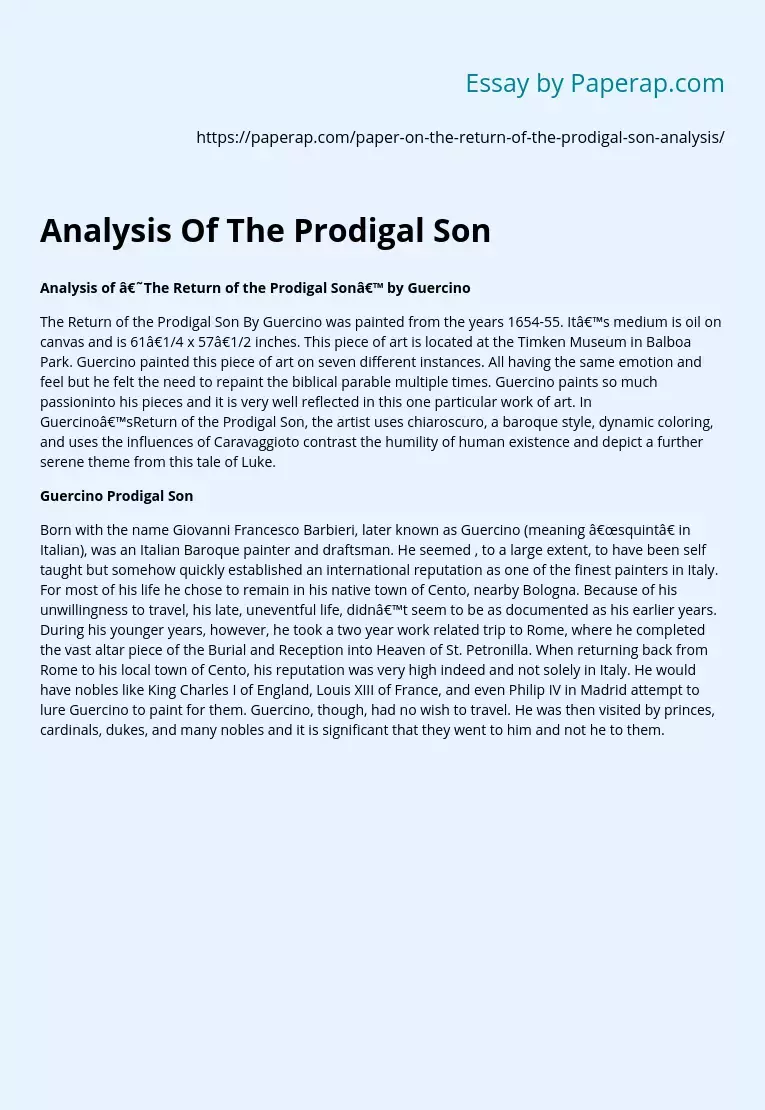Analysis Of The Prodigal Son
Analysis of ‘The Return of the Prodigal Son’ by Guercino
The Return of the Prodigal Son By Guercino was painted from the years 1654-55. It’s medium is oil on canvas and is 61”1/4 x 57”1/2 inches. This piece of art is located at the Timken Museum in Balboa Park. Guercino painted this piece of art on seven different instances. All having the same emotion and feel but he felt the need to repaint the biblical parable multiple times. Guercino paints so much passioninto his pieces and it is very well reflected in this one particular work of art.
In Guercino’sReturn of the Prodigal Son, the artist uses chiaroscuro, a baroque style, dynamic coloring, and uses the influences of Caravaggioto contrast the humility of human existence and depict a further serene theme from this tale of Luke.
Guercino Prodigal Son
Born with the name Giovanni Francesco Barbieri, later known as Guercino (meaning “squint” in Italian), was an Italian Baroque painter and draftsman.
He seemed , to a large extent, to have been self taught but somehow quickly established an international reputation as one of the finest painters in Italy. For most of his life he chose to remain in his native town of Cento, nearby Bologna. Because of his unwillingness to travel, his late, uneventful life, didn’t seem to be as documented as his earlier years. During his younger years, however, he took a two year work related trip to Rome, where he completed the vast altar piece of the Burial and Reception into Heaven of St.
Petronilla. When returning back from Rome to his local town of Cento, his reputation was very high indeed and not solely in Italy. He would have nobles like King Charles I of England, Louis XIII of France, and even Philip IV in Madrid attempt to lure Guercino to paint for them. Guercino, though, had no wish to travel. He was then visited by princes, cardinals, dukes, and many nobles and it is significant that they went to him and not he to them.
Analysis Of The Prodigal Son. (2019, Nov 27). Retrieved from https://paperap.com/paper-on-the-return-of-the-prodigal-son-analysis/

